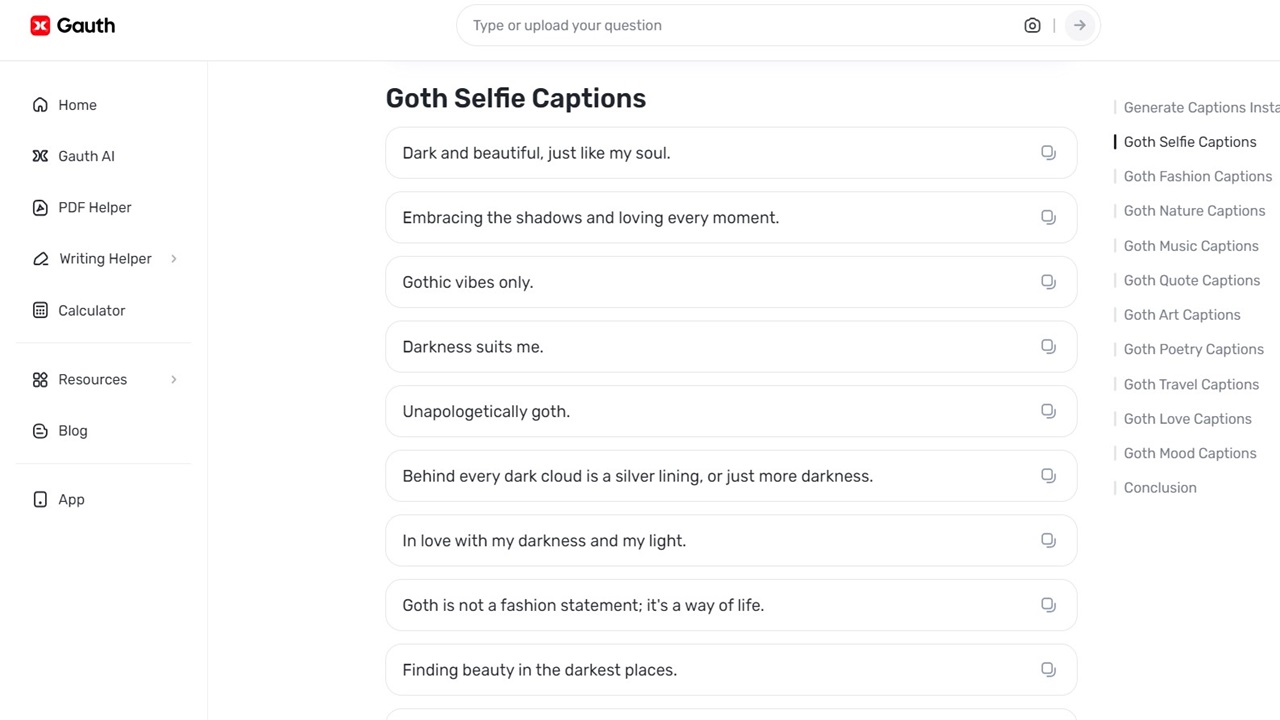Gothic art is very detailed and has strong contrasts and a lot of symbolism, so it is very hard to describe it in plain language. It is not easy to explain such a subtle genre because one is forced to explain the impact of the piece and the emotion that is elicited. For this purpose, Gauth offers an approach to automatically generate descriptive and engaging descriptions of Gothic art. This article explores how Gauth simplifies the process of describing gothic captions for instagram, making it easier to convey their unique characteristics and significance.
Understanding Gothic Art
Gothic art which was in vogue between the 12th and 16th centuries, can be described as ornate, the use of light and dark colors and the use of symbolism. It is a type of artwork that encompasses Gothic cathedral architecture and the decoration of manuscripts and it is very difficult to express such artistic works in words and phrases that would depict the meaning of the artwork. Because of the complexity and the density of Gothic art, the only way to explain it is to look at the method and the meaning that it brings.
The Challenge of Describing Gothic Art
Describing Gothic art involves more than merely listing visual attributes. These descriptions have to include the affective and the semiotic level of the artwork, as well as its historical and cultural context. This can be especially difficult because of the detail and the density of the symbolism in Gothic art It is a challenge to come up with descriptions that will entice the viewers and at the same time explain the meaning of the artwork.
How Gauth Simplifies Description Writing
Gauth employs advanced algorithms and natural language processing to assist users in generating detailed and engaging descriptions. By analyzing the artwork and understanding its context, Gauth produces descriptions that capture the essence of Gothic art without requiring extensive manual input. The following features of Gauth make it a valuable tool for describing Gothic artworks:
Contextual Understanding
Gauth’s ability to comprehend the historical and cultural context of Gothic art allows it to generate descriptions that reflect the significance of the artwork. By incorporating information about the era, the artist, and the symbolic elements, Gauth ensures that descriptions are not only accurate but also rich in historical and thematic detail.
Detailed Imagery
The intricate nature of Gothic art necessitates detailed descriptions that highlight specific visual elements. Gauth excels in this area by analyzing the artwork’s features—such as architectural elements, patterns, and color contrasts—and generating descriptions that emphasize these details. This level of precision helps viewers appreciate the complexity and craftsmanship of the art.
Emotional and Symbolic Depth
Gothic art is said to have a hidden meaning and or symbolism in the works of art done in this style. These aspects are attained by Gauth because it employs language that captures the mood and themes of the artwork. Whether it is the somber colors of religious painting or the contrasting colors of gothic architecture, Gauth aids in understanding the emotion and message of the art.
Enhancing Engagement and Accessibility
Descriptions are needed to speak to the audience and to make art more understandable for the people. Gauth enhances engagement by creating descriptions that are both informative and captivating. Therefore, Gauth allows the viewers to comprehend the artwork and its message with the help of simple definitions and the use of emotional vocabulary. This is particularly useful for viewers who are not very acquainted with Gothic art since it assists them in perceiving the works in question in a different manner.
Streamlining the Description Process
Creating compelling descriptions for Gothic art can be time-consuming and labor-intensive. Gauth streamlines this process by offering instant description suggestions based on the artwork’s characteristics. This efficiency helps the curators, artists, and writers to focus on other aspects of their work because they know that the descriptions will be elaborate.

Conclusion
To describe Gothic art, one has to be as accurate as possible when it comes to technique, as sensitive as possible when it comes to feeling, and as informed as possible when it comes to history. This is made easier by Gauth, who provides descriptive, contextual, and vivid descriptions that can be used to describe Gothic artworks. Due to the help of modern algorithms and natural language processing, Gauth helps users to describe the richness and depth of Gothic art, which makes it possible to enjoy this interesting genre. Hence, the creation of descriptions for Gothic art becomes less of a challenge and more effective, enhancing the presentation and understanding of these timeless pieces.

